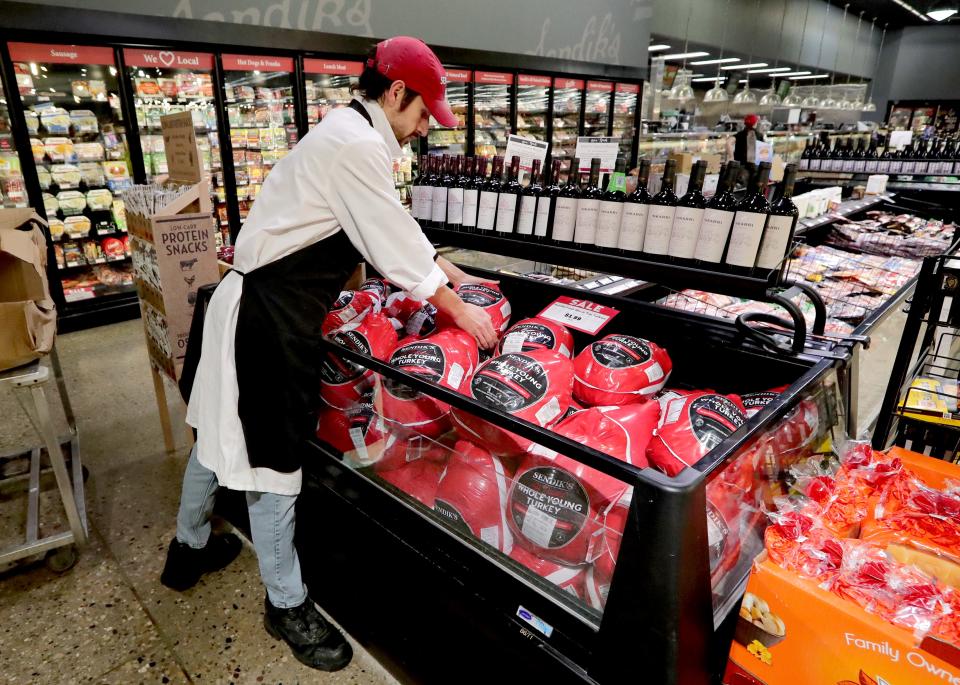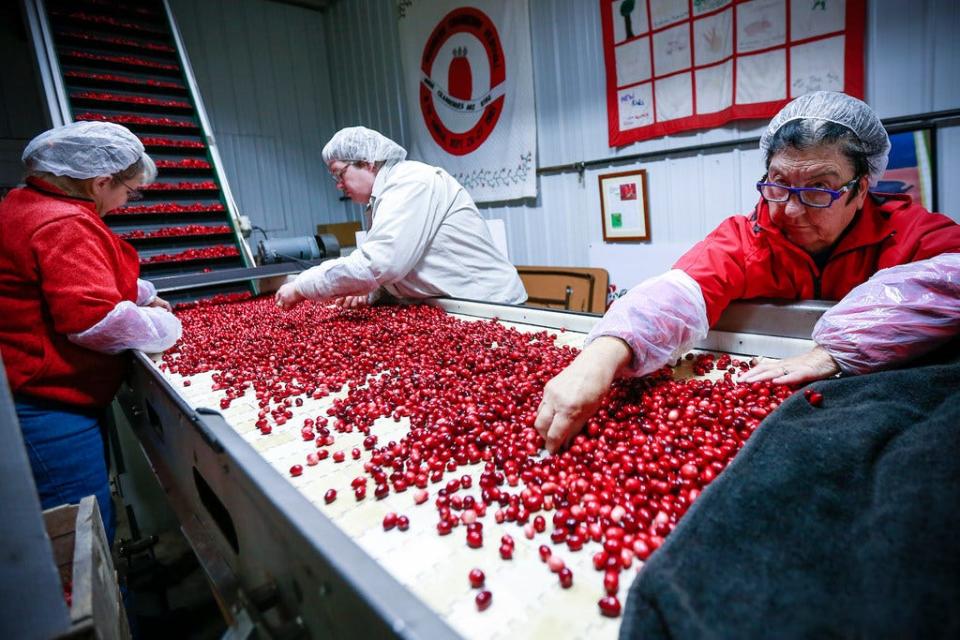What's the most Wisconsin Thanksgiving dinner you could eat? Here's what the data shows
From mashed potatoes to canned cranberries, the agricultural industry in Wisconsin produces many of our Thanksgiving favorites.
This year, we at the Milwaukee Journal Sentinel wondered: what's the most Wisconsin Thanksgiving dinner you could eat?
Like any news organization worth its salt and pepper, we turned to the data.
Wisconsin's main agricultural products include many of America's Thanksgiving favorites
We identified 19 popular Thanksgiving foods produced in Wisconsin, and compared the state's total annual production of each using data from the U.S. Department of Agriculture. The result is a 6 million-ton "plate" of food our state generated last year.
It's a nontraditional, but extremely cheesehead, Thanksgiving meal.
A Thanksgiving dinner scaled to Wisconsin's agricultural production
Each section on the plate below corresponds to the total weight in tons of a commodity produced in Wisconsin in 2022. Hover over a section for more information.
Source: National Agriculture Statistics Service (USDA)
Note: This graphic only includes commodities that reported production totals in 2022. Some commodities, like milk and soybeans, have been excluded to make the remaining commodities visible. Pumpkin production for 2021 was used because 2022 production was redacted. Weights of commodities reported in volumes have been estimated.
Chart by Andrew Hahn / Milwaukee Journal Sentinel
A Thanksgiving meal scaled to Wisconsin's agricultural output would predictably include more cheese than most traditional plates, as Wisconsin produced 1.8 million tons of cheese last year. That's the weight of almost 9,000 Boeing 747 airliners.
Our state's turkey-day dinner plate is ultimately more plant than poultry, given that it produced almost 2.5 million tons of vegetables, fruits, grains, and legumes last year. (That doesn't include 3.4 million tons of soybeans, or any commodities not surveyed in 2022.)
Some products had to be excluded for clarity, including more than 16 million tons of milk. When included, the volume of these items dwarfs the Thanksgiving foods we recognize.
Scaled for Wisconsin production, turkey would make up just a tiny portion of the dinner plate. More than 3 million turkeys were slaughtered in Wisconsin last year, and turkeys even outnumber humans in some parts of the state, like Barron County. But Wisconsin's turkey output pales in comparison to other products like potatoes, corn and wheat.

Ashley Hagenow is Wisconsin's 76th Alice in Dairyland, and spoke about Wisconsin's agricultural production on behalf of the state Department of Agriculture, Trade and Consumer Protection.
She said Wisconsin leads the U.S. in production of cheese, producing a quarter of the nation's cheese each year.
"We are very proud of the tradition of cheese-making here in Wisconsin," Hagenow said. "We are home to 600 styles, types, and varieties of cheeses.”
In addition to cranberries, Hagenow pointed out that Wisconsin leads the nation in the production of several other Thanksgiving favorites. The state ranks first in the nation in production of green beans, second in butter, and third in potatoes.
America depends on Wisconsin for some classics, like cranberries
No discussion of Thanksgiving production in Wisconsin would be complete without a look at our state's favorite berry, the cranberry.
Wisconsin produces almost two-thirds of the world's cranberries. They have been harvested in Wisconsin for as long as people have lived here, said Allison Jonjak, cranberry outreach specialist at the University of Wisconsin-Extension, who grew up on a cranberry marsh herself.
"This really represents America, and it happens to be harvested right before Thanksgiving," Jonjak said. "Cranberries are ready right now, they're emblematic of North America, and they go really well with most meats."
In 2022, Wisconsin cranberry producers grew almost five million barrels. This equates to roughly 240,000 tons of our state fruit.
Cranberry farmers proved resistant to this year's drought, producing more cranberries than last year, Jonjak said.
And while Jonjak didn't settle the canned-versus-whole-berry debate once and for all, she did share her preferences.
"I usually eat them raw while I'm harvesting them. During Thanksgiving, I'm a whole-berry sauce kind of person," Jonjak said. Of the canned version, she said simply: "It's also tasty."

Wisconsin's agricultural heritage is facing challenges
Although agriculture is central to Wisconsin's identity, the state has lost a significant amount of farmland to residential and commercial development in recent years, and young farmers say finding affordable land is increasingly difficult.
Wisconsin's farming industry also poses some environmental challenges that scientists and advocates are trying to address, including drinking water contamination from common fertilizers and using groundwater stores for irrigation.
"The biggest water quality challenge we have in the state is related to agricultural impacts," said Sara Walling, water and agriculture program director at Clean Wisconsin, an environmental advocacy group.
Walling said the relative abundance of water in Wisconsin makes it even more important that environmental advocates and farmers find ways to protect it.
"The use of water to grow the crops that we have here is going to be a lot less intense than the water use is going to need to be in California, for instance," Walling said.
Jonjak encouraged consumers to support the state's agricultural heritage by buying Wisconsin products when possible.
"Buying a Wisconsin commodity, not only cranberries ... helps keep our economy strong," she said. "Anything that consumers can do to support farmers individually but also the whole agricultural ecosystem is huge."
This article originally appeared on Milwaukee Journal Sentinel: What's the most Wisconsin Thanksgiving dinner you could eat?

